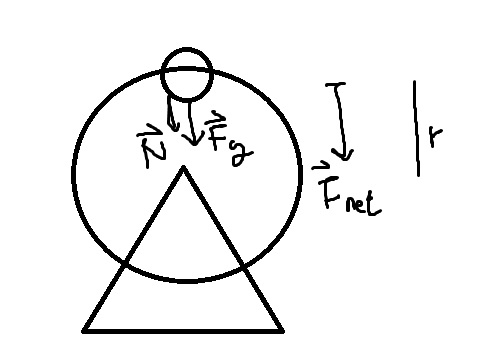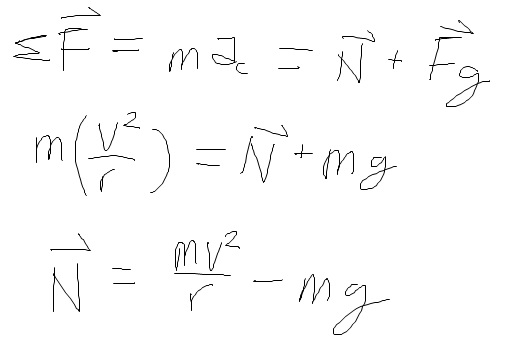How much Force does it take to
Break?

In order to answer this question, the #16 Ferris
Wheel from Eli Bridge Company will be used as the
example.
Preliminary math:
The Ferris Wheel spins at 4.75 rounds per minute.
That is 0.0792 Rounds per second or 12.63
seconds per round.
The Ferris Wheel has a diameter of 20.4 m. That is
10.2m in its radius and about 64.09m in its
circumference.
The velocity, then is 5.08m/s
The maximum load mass is 3,701kg between 16 seats,
or 231.3kg per seat.
The Ferris Wheel without any passenger is 22,000
lbs, which is 9,979 kg.
The Physics:
Since the Ferris Wheel goes around at constant
speed, it is an example of Uniform Circular Motion.
In uniform circular motion, the acceleration is
velocity (v) squared over radius. It is important to
note the difference between speed and velocity. The
Ferris Wheel is moving at the same speed in a
circle, but since the direction the velocity is
always changing, it does not have a constant
velocity. And at every point, the acceleration, as
well as its net force, is towards the center of the
wheel.
Let's look at the forces being applied to the cart
at the top of the wheel.

Notice that the Normal force (N) is pushing down on
the cart, as well as the Force of Gravity. Let's say
the positive direction is down towards the center of
the circle. And according to the Newton's Second
Law, the net force equals the mass multiplied by its
acceleration. In this case, the acceleration is the
centripetal acceleration pointed to the center.
The Net Force Equation can be written as

Notice that the centripetal acceleration is written
as the velocity squared over the radius, and what
the Normal Force equals to. As the velocity
increases, it will go past the gravitational force
and start to push against the cart itself. By
putting in the recommended specifications for the
example Ferris Wheel, with 231.3kg for mass, 5.08m/s
as velocity, 10.2m as radius and 9.8m/s^2 as the
gravity:
Normal force = -1682.57N,
which explains why someone may feel lighter at the
top.
This means that the Ferris Wheel will start to be
under strain if more velocity is added. As velocity
increases, the Normal force will start to become
less negative, and eventually the normal force will
be high enough to be working against the steel
support. Stress exerted on the steel support can be
calculated as Force/Area. And considering the
massive size of the support, it can take quiet a
while for the steel supports to break, and become
deadly.
But does this mean that if the material is strong
enough to withhold moving at amazing speed,
you can ride it without worrying about dying? Not
exactly...
|